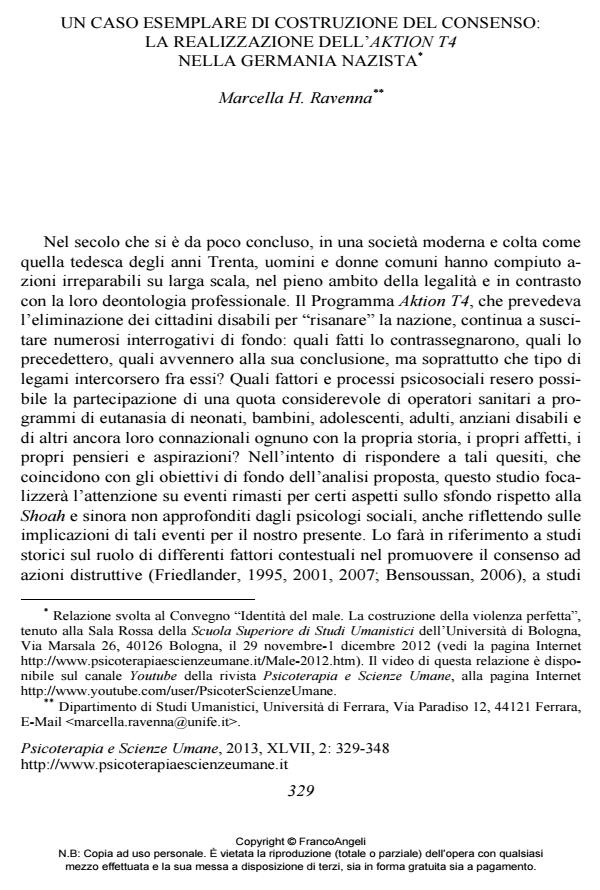Un caso esemplare di costruzione del consenso: la realizzazione dell’Aktion T4 nella Germania nazista
Journal title PSICOTERAPIA E SCIENZE UMANE
Author/s Marcella H. Ravenna
Publishing Year 2013 Issue 2013/2
Language Italian Pages 20 P. 329-348 File size 275 KB
DOI 10.3280/PU2013-002013
DOI is like a bar code for intellectual property: to have more infomation
click here
Below, you can see the article first page
If you want to buy this article in PDF format, you can do it, following the instructions to buy download credits

FrancoAngeli is member of Publishers International Linking Association, Inc (PILA), a not-for-profit association which run the CrossRef service enabling links to and from online scholarly content.
In Germany during the 1930s men and women committed large-scale killings, legally but in contrast with their professional ethics. The aim of this study is to examine with an inductive approach some aspects that so far have not been addressed by social psychologists: What events anticipated the Aktion T4 program? What events defined the T4 program? What took place at its conclusion? More importantly, what were the relationship between all of them? What factors and psychosocial processes made possible the participation of a significant proportion of health care professionals to euthanasia programs of infants, children, adolescents, adults, elderly, disabled? The main results of this analysis and their implications are discussed in relation to different contextual factors and according to the methods of psychological functioning of the perpetrators in the context of recent historical, psychosocial, and clinical studies.
Keywords: Aktion T4, psychological functioning of perpetrators, situational influences, dehumanization of victims, Nazism
Marcella H. Ravenna, Un caso esemplare di costruzione del consenso: la realizzazione dell’Aktion T4 nella Germania nazista in "PSICOTERAPIA E SCIENZE UMANE" 2/2013, pp 329-348, DOI: 10.3280/PU2013-002013